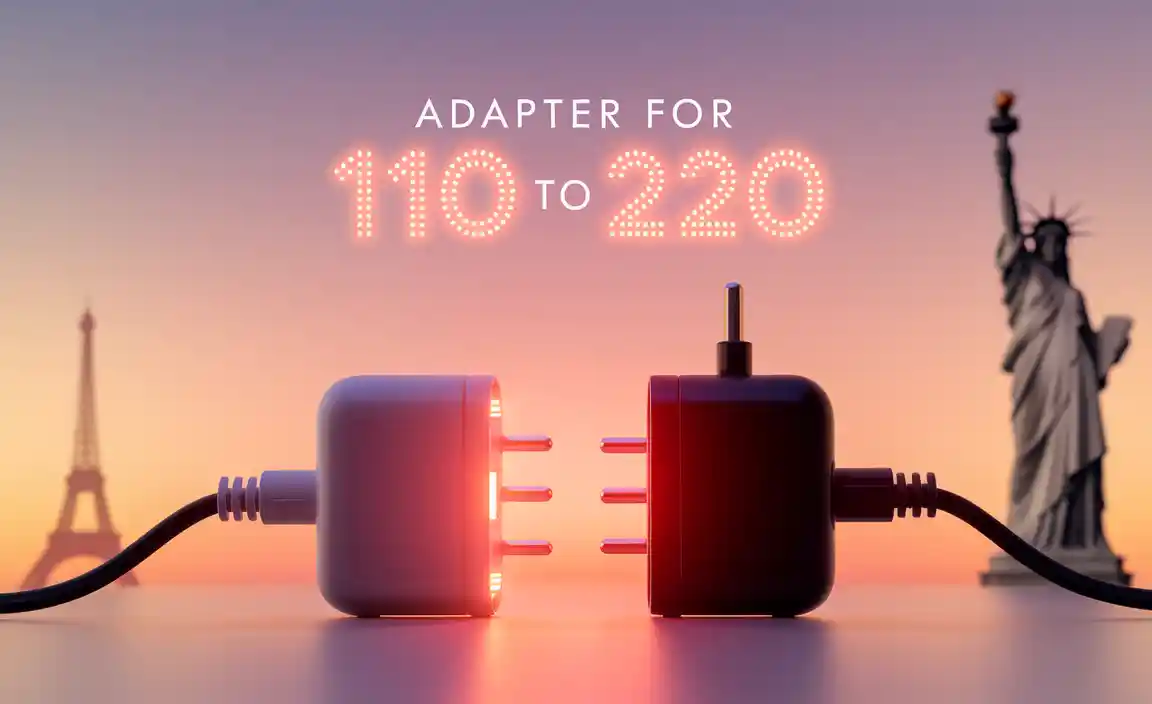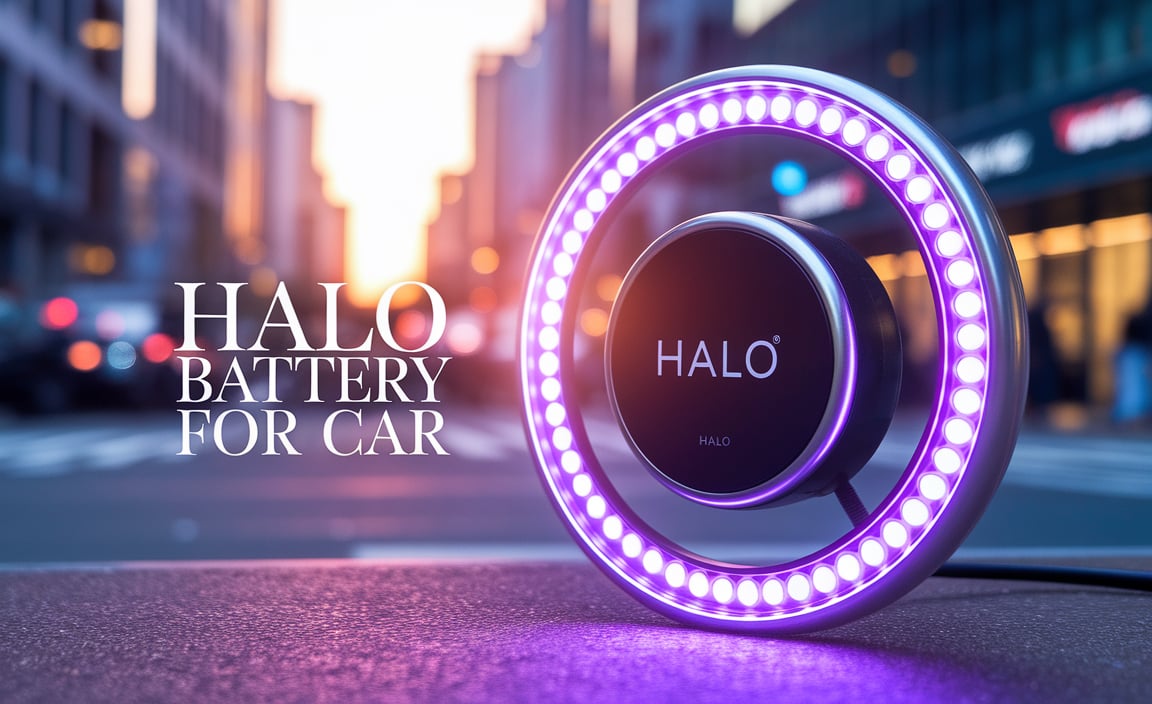Finding the right battery for your car key fob is usually straightforward. Most key fobs use small, coin-shaped batteries called lithium coin cells. The exact type depends on your car’s make and model, but common ones include CR2032, CR2016, and CR2025. Check your car’s manual or the old battery for the specific number. Replacing it yourself saves time and money!
Ever popped open your car’s key fob, only to be met with a confusing array of tiny, round batteries? It’s a common frustration when your key fob suddenly stops working. You might be unsure which little disc to buy to bring it back to life. Don’t worry, it’s simpler than it looks! This guide will walk you through finding the perfect battery for your key fob, making the replacement process easy and stress-free.
Understanding Your Key Fob Battery
Your car key fob is a marvel of modern technology, allowing you to lock, unlock, and even start your car with the press of a button. At its heart is a small battery, much like the ones you might find in a watch or a small electronic gadget. These batteries are typically “lithium coin cells” or “button cells.” They’re designed to be compact, long-lasting, and provide a steady power source for your fob.
Over time, like any battery, these power sources will eventually run out. When this happens, your key fob might become unresponsive, or its range might decrease significantly. This is your cue that it’s time for a replacement. The good news is that knowing the “type of battery for key fob” you need is the biggest hurdle, and we’re here to make that easy.
Why Do Key Fob Batteries Die?
Several factors contribute to a key fob battery losing its power:
- Age: All batteries have a lifespan. Even when not actively used, they slowly lose charge over time.
- Usage: Frequent use of your key fob’s buttons will drain the battery faster.
- Temperature: Extreme heat or cold can negatively impact battery performance and longevity.
- Battery Quality: Lower-quality batteries may not last as long as reputable brands.
Common Types of Key Fob Batteries
The world of key fob batteries can seem a bit overwhelming with all the different numbers and sizes, but thankfully, a few types are much more common than others. These are primarily lithium coin cells, known for their high energy density and long shelf life.
The most critical part of finding the right battery is identifying the specific number printed on the old battery or found in your car’s owner’s manual. This number tells you the exact size and voltage required.
The Mighty CR Series: Your Most Likely Candidates
The “CR” designation in battery names signifies that they are lithium-based and have a 3-volt output. The numbers that follow indicate the battery’s dimensions. Here are the most frequent players:
CR2032: The King of Key Fobs
If you have a key fob, there’s a very high chance it uses a CR2032 battery. This is one of the most common coin cell batteries worldwide. It’s slightly thicker and larger in diameter than some other types, providing ample power and longevity.
- Dimensions: 20mm diameter, 3.2mm thick
- Voltage: 3V
- Common In: Many modern car key fobs, garage door openers, car remotes, and other small electronics.
CR2025: A Slimmer Alternative
The CR2025 is very similar to the CR2032 but is slightly thinner. This makes it ideal for key fobs with very slim profiles where space is at a premium.
- Dimensions: 20mm diameter, 2.5mm thick
- Voltage: 3V
- Common In: Some car key fobs, computer motherboards, calculators, and remote controls.
CR2016: The Thinnest Option
The CR2016 is the thinnest of this common trio. It’s often used in key fobs designed to be as compact as possible.
- Dimensions: 20mm diameter, 1.6mm thick
- Voltage: 3V
- Common In: Very slim key fobs, keychains, small medical devices, and some mini-LED flashlights.
Other Less Common Types
While the CR2032, CR2025, and CR2016 cover the vast majority of key fob needs, you might encounter a few other types, especially in older or more specialized vehicles:
- CR1620: Smaller diameter (16mm) and thinner (2mm).
- CR1616: Even thinner (1.6mm) with a 16mm diameter.
- CR2450: Larger diameter (24.5mm) and thicker (5mm), offering more capacity for more power-hungry fobs.
Remember, the easiest way to find the correct battery is to look at the old one. It will have its identification number clearly printed on its surface.
How to Identify the Correct Battery Type
Don’t guess when it comes to your key fob battery! Getting the correct type ensures your fob works properly and avoids potential damage. Here’s how to find out exactly what you need:
1. Check Your Car’s Owner’s Manual
This is the most reliable source directly from the manufacturer. Your owner’s manual will have a section on the key fob, often detailing the battery type and sometimes even providing instructions for replacement. If you don’t have your physical manual, most manufacturers offer downloadable PDF versions on their official websites.
2. Inspect the Old Battery
The easiest and most common method is to open your key fob and look at the battery that’s already inside. You’ll need to carefully pry open the fob (more on that later). Once open, the battery will have a series of letters and numbers printed on its flat, metallic surface. This is the model number you need to match.
Example: You’ll see something like “CR2032” printed on the battery.
3. Online Search (with Caution)
If you can’t find your manual or get the old battery out easily, you can try searching online. Use your car’s make, model, and year, followed by “key fob battery type.” For example, “2018 Honda Civic key fob battery type.” This will usually give you reliable results from automotive forums, parts stores, or battery suppliers.
Pro Tip: Always cross-reference information from online searches with another source if possible. Sometimes, a specific trim level or year might have a slightly different fob.
Buying the Right Battery: What to Look For
Once you know the battery type (e.g., CR2032), you’re ready to buy a replacement. Here’s what makes a good purchase:
Brand Name vs. Generic
Reputable battery brands like Energizer, Duracell, Panasonic, and Sony generally offer better quality and consistency. While generic brands might be cheaper, they can sometimes have a shorter lifespan or inconsistent performance. For a small device like a key fob, investing a dollar or two more for a well-known brand is usually worth it for peace of mind.
You can often find these batteries in:
- Supermarkets
- Drugstores
- Big-box electronics stores (like Best Buy)
- Hardware stores
- Online retailers (Amazon, eBay)
Check the Expiration Date
Even new batteries have a shelf life. Look for an expiration date printed on the battery packaging. Batteries stored for too long, even in their original packaging, can lose some of their charge. Aim for batteries with several years remaining on their expiration date.
Voltage Consistency
For key fobs, stick to the specified voltage (usually 3V for “CR” batteries). Using a battery with a different voltage could damage the fob’s electronics.
Quantity
Key fob batteries are small and inexpensive. They are often sold in blister packs of 2, 5, or 10. It’s a good idea to buy a small pack so you have spares on hand for the future, or if another family member needs one.
Replacing Your Key Fob Battery: A Step-by-Step Guide
Replacing a key fob battery is a minor DIY task that most people can do in minutes. Here’s how to tackle it safely and effectively.
Tools You Might Need:
- The new replacement battery (correct type!)
- A small flathead screwdriver or a plastic pry tool
- A soft cloth or paper towel
Step 1: Locate the Seam or Notch
Examine your key fob. Most fobs are made of two plastic halves that snap together. You’ll usually find a faint seam running around the edge. Some fobs also have a small notch or slot on one edge, designed specifically for prying them open.
Step 2: Gently Pry Open the Fob
If there’s a notch, insert the tip of your flathead screwdriver or plastic pry tool into it. Gently twist the tool to create a small gap between the two halves. If there’s no notch, carefully insert your tool along the seam and gently work your way around, applying light pressure until the halves begin to separate.
Safety Tip: Use a plastic pry tool if possible. This is less likely to scratch or damage the plastic casing of your key fob compared to a metal screwdriver. If using a screwdriver, be very gentle.
Step 3: Remove the Old Battery
Once the fob is open, you’ll see the coin cell battery. It might be held in place by a small clip or simply be seated in a compartment. Note the orientation of the battery (which side is facing up). You can usually pull the old battery out with your fingers, or you might need to gently lever it out with your pry tool or screwdriver.
Watch a video demonstration of opening a common key fob.
Step 4: Insert the New Battery
Take your new battery and place it into the compartment. Make sure it’s oriented correctly. The positive side (usually marked with a “+” symbol) should face the corresponding contact inside the fob. It should fit snugly.
Step 5: Close the Key Fob
Align the two halves of the key fob and gently press them back together. You should hear or feel them snap shut. Ensure there are no gaps around the edges.
Step 6: Test Your Key Fob
Now for the moment of truth! Try locking and unlocking your doors, opening the trunk, or starting your car (if it’s a push-button start fob). If everything was done correctly, your key fob should work like new!
Troubleshooting if it doesn’t work
- Double-check the battery orientation.
- Ensure the battery is the correct type and voltage.
- Make sure the battery contacts inside the fob are clean.
- Try reseating the battery and closing the fob again.
- If it still doesn’t work, the battery might be dead on arrival, or there could be an issue with the fob itself (which might require a dealership or locksmith to fix).
A Look at Common Key Fob Battery Types (Table)
To help you quickly identify potential batteries, here’s a handy table summarizing the most common types and their characteristics. Always confirm with your vehicle’s manual or the existing battery for the exact match.
| Battery Type | Diameter (mm) | Thickness (mm) | Voltage (V) | Common Uses |
|---|---|---|---|---|
| CR2032 | 20 | 3.2 | 3V | Most common car key fobs, remotes, medical devices |
| CR2025 | 20 | 2.5 | 3V | Slim key fobs, computer motherboards, calculators |
| CR2016 | 20 | 1.6 | 3V | Very slim key fobs, small electronics |
| CR1620 | 16 | 2.0 | 3V | Smaller key fobs, digital watches |
| CR2450 | 24.5 | 5.0 | 3V | Larger, higher-power devices |
When to Seek Professional Help
While most key fob battery replacements are a simple DIY job, there are times when it’s best to consult a professional. If you’ve replaced the battery and the fob still doesn’t work, or if you’re having trouble opening the fob without damaging it, consider these options:
- Car Dealership: They can identify the correct battery and perform the replacement, but it might be more expensive.
- Automotive Locksmith: Many locksmiths specialize in car keys and can replace batteries and even program new fobs.
- Electronics Repair Shop: For very common fobs, some smaller repair shops might be able to assist.
When in doubt, a quick call to your local automotive locksmith can often save you time and hassle. You can find reputable locksmith services through organizations like Associated Locksmiths of America (ALOA), which provides a directory of certified professionals.
Prolonging Your Key Fob Battery Life
Want to get the most out of your key fob battery? Here are a few tips:
- Avoid Accidental Button Presses: Keep your key fob away from other objects in your pocket or purse that could inadvertently press the buttons. A fob cover or leather pouch can help.
- Minimize Remote Start Use in Extreme Weather: While convenient, frequent use of the remote start feature in very hot or cold conditions can tax the battery more than usual.
- Store Fobs Properly: If you have multiple sets of keys, store the spare fob away from extreme temperatures.
- Replace When Diminished: Don’t wait until the fob is completely dead. If you notice the buttons require more presses or the range is significantly reduced, it’s likely time for a replacement. This prevents you from being stranded.
Frequently Asked Questions (FAQ)
Q1: How do I know which battery type for my key fob?
A1: The best ways are to check your car’s owner’s manual, or carefully open the key fob and read the number printed on the old battery. Common types are CR2032, CR2025, and CR2016.
Q2: Can I use a different battery type if the one recommended isn’t available?
A2: It’s strongly advised not to. Key fobs are designed for a specific voltage and size. Using an incorrect battery could damage the fob’s electronics or cause it not to work.
Q3: My new battery didn’t fix the problem. What else could be wrong?
A3: The issue might be with the key fob itself (a broken internal component), or the new battery might be faulty or dead on arrival. You could also try cleaning the metal contacts inside the fob. If these steps don’t work, you may need professional help from a dealership or locksmith.
Q4: How often do key fob batteries need to be replaced?
A4: This varies greatly depending on usage and battery quality, but typically, they last anywhere from 1 to 5 years. You’ll notice reduced range or an unresponsiveness when it’s time for a change.
Q5: Is it safe to replace the key fob battery myself?
A5: Yes, absolutely! Replacing a key fob battery is a very safe and simple DIY task. Just be gentle when opening the fob and ensure you use the correct battery type.
Q6: Where can I buy replacement key fob batteries?
A6: You can find them at most convenience stores, drugstores, supermarkets, electronics stores, hardware stores, and online retailers. Look for reputable brands like Energizer, Duracell, or Panasonic for better reliability.
Conclusion
Navigating the world of key fob





